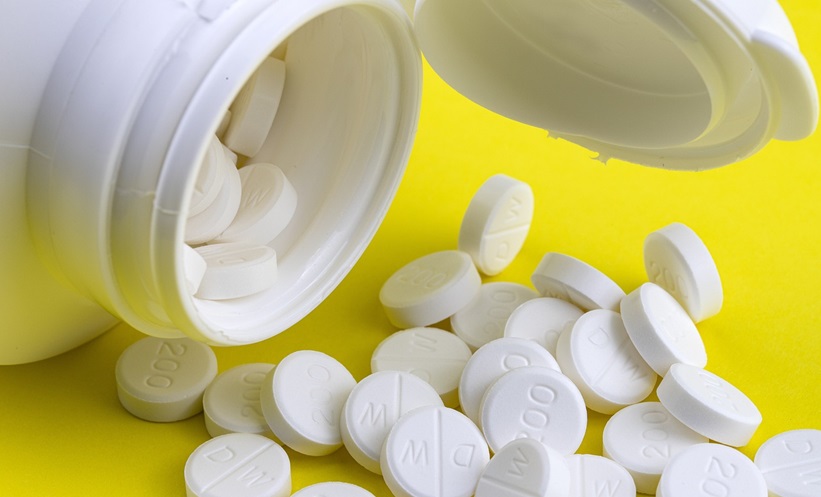Author: Hannah J. Moir
Support statement: The writing and publication of this news feature was supported by Viatris, who were not involved in the creation of this content.
![]()
At this year’s American College of Rheumatology (ACR) 2023 Convergence, held in San Diego, California, USA, between 10th–15th November 2023, several sessions considered the adoption and implementation of biosimilars.
Such session highlights were discussed by Jack Cush and Arthur Kavanaugh in the RheumNow ACR 2023 webinar roundup. A segment of their conversation considered the importance and interest in biosimilar approval, which they noted as now having a dramatic impact on access and cost around the world, impacting treatment algorithms, and ushering healthcare into a new era of mechanisms of action with more accessible treatment options on the horizon. Kavanaugh highlighted the USA’s current lag in biosimilar uptake compared to Europe, Japan, the UK, and South America, emphasising the need to consider patient benefit and cost. The increased number of approved adalimumab biosimilars is drawing increasing attention from practitioners. They acknowledged the challenges, including the lack of control in the USA, and the external decision-making processes for biosimilar use. However, they anticipated that the growing number of biosimilars would influence the market and potentially lead to increased use. Despite their potential benefits, challenges in their adoption due to various factors, including pricing, efficacy concerns, and the influence of manufacturers in the market, exist.
For further insights and key updates from ACR Convergence 2023, tune in to the EMJ Webinar entitled: “Key Insights From ACR 2023,” featuring an interdisciplinary expert roundtable discussion with a spotlight on biosimilars.
THE RISE OF WHITE BAGGING
A well-attended session on the future of biosimilars and white bagging in rheumatology captured the attention of many at this year’s ACR 2023. The healthcare delivery landscape is undergoing a transformation, shaped by complex financial dynamics and evolving treatment methods. During this session, Angus Worthing, a practising rheumatologist at Arthritis and Rheumatism Associates, P.C. in Washington, D.C., USA, shed light on the evolving landscape of healthcare systems and their impact on delivering critical treatments delving into the complexities patients often encounter when seeking treatment and access to treatment. The session covered the key issues surrounding the importance of improved patient access to quality treatment, considering the reduction of barriers to access associated with white bagging policies.
In the medical and pharmaceutical industry, ‘white bagging’ refers to a mandate that requires healthcare providers to receive medications from a speciality pharmacy. These medications must be shipped directly to a physician’s office or hospital for administration to a patient. The term ‘white bagging’ originates from the practice of healthcare providers receiving the medication in a plain white bag, devoid of any branding or identifying information from the speciality pharmacy. For context, ‘brown bagging’ refers to the practice of shipping medication directly to the patient, who then brings it to the healthcare provider’s office or hospital for administration.
The discussion centred on the pivotal decisions that influence patient access to treatment, whether it be through patients receiving biologics, including biosimilars, at infusion centres, outpatient facilities, or traditional pharmacy routes. This evolving landscape highlights the critical interplay between financial structures, control mechanisms, and patient access to treatment. Understanding these dynamics becomes imperative for stakeholders navigating the ever-changing terrain of healthcare delivery.
THE CONUNDRUM OF TREATMENT DISTRIBUTION
Overall spending on speciality drugs has increased over the past 5 years, primarily driven by rising prices, increased utilisation, and high markups.1
The practice of white bagging has sparked debate among stakeholders. Advocates of white bagging argue that it can lead to lower drug costs, increased patient convenience, and improved adherence to treatment regimens. They assert that speciality pharmacies, with their expertise in managing complex medications, can provide these benefits more effectively than traditional healthcare provider-based pharmacies.1
However, opponents of white bagging, including healthcare providers and patient advocacy groups, raise concerns about the potential for compromising patient safety. They argue that under this model, healthcare providers relinquish control over the handling, preparation, and storage conditions of the drug prior to its administration.1
Specifically, the Coalition of State Rheumatology Organizations (CSRO) has expressed concerns that white bagging practices may expose patients to medications that have not undergone proper drug supply chain security and quality-control measures, potentially jeopardising their safety.2
Additionally, critics of white bagging argue that it can increase the workload for healthcare providers, taking away time from other patient care activities. They also raise concerns about the potential for medication errors and the reduced transparency of the source and qualification of the dispensing pharmacy.3
In 2023, several states in the USA enacted legislation prohibiting white bagging and brown bagging policies within the healthcare industry.1 This action underscores the growing concerns regarding the potential drawbacks of these policies and the need for a more balanced approach to managing drug costs.
According to an April 2023 white paper from the Institute for Clinical and Economic Review (ICER), Pearson et al.3 noted that payers have a justifiable reason to consider policies that can maintain adequate access while reducing provider markup.
The white paper highlighted the limited evidence supporting the effectiveness of these policies, and acknowledged the potential risks associated with them. It specifically mentioned that white bagging policies have been implemented by some payers of anti-TNF biosimilars. The white paper emphasised the need for further research to evaluate the effectiveness of white bagging, brown bagging, and site of service policies, as well as their impact on patient access and outcomes.3
THE ERA OF BIOSIMILARS
So, how is this of importance considering the era of biosimilars?
White bagging is not universally applied to all medications. It is typically used for medications that are expensive, require special handling, or are administered via injection or infusion. The introduction of biosimilars into the market led to a notable reduction in the price of the reference product, impacting reimbursement rates for infusion centres that previously relied on buy-and-bill reimbursement models (a reimbursement model used to pay for speciality drugs that are administered by healthcare providers).4
Worthing noted that the reimbursement model for infusion centres traditionally involved payment based on the average sales price of the drug plus a margin percentage. However, as the price of the reference product declined due to biosimilar competition, reimbursement for infusion centres diminished significantly, jeopardising their sustainability.
Biosimilars, initially reimbursed slightly higher than the reference product, push the latter to decrease its price to stay competitive, impacting the financial wellbeing of the entire ecosystem. Worthing identified that this union of reduced reimbursement rates from biosimilars, potential financial strain on infusion centres, and the concept of white bagging poses a complex and multifaceted issue in the healthcare landscape. White bagging, motivated by entities seeking greater control over financial streams, further complicates the financial stability of healthcare practices.
PHARMACY VERSUS INFUSION CENTRES: THE BATTLE OF FUNDING STREAMS
The discussion pivoted to the dichotomy between pharmacy distribution and infusion centre models. In the pharmacy route, patients procured medications, and a complex interplay between manufacturers, pharmacy benefit managers, payers, and insurers ensued, leading to multiple funding streams. “The payer in the pharmacy system isn’t just one entity,” highlighted Worthing.
This fragmented reimbursement structure raises questions about equitable access and cost containment strategies. Worthing noted that some centres followed the Medicare guideline of the average sales price plus 6%, while others negotiated different percentages with private insurance companies.
Of interest, data from IQVIA found that in the previous ‘buy-and-bill’ context (a reimbursement model used to pay for speciality drugs that are administered by healthcare providers), biosimilars on average had significantly higher uptake compared to when they were white-bagged, with 31% versus 8% uptake at 6 months and 57% versus 35% uptake after 2 years.5
Some infusion centres refuse to participate in white bagging, anticipating inadequate reimbursement. To mitigate financial strain, Worthing outlined several strategies:
- Creating an internal formula to monitor margins, avoiding starting patients on unprofitable medications, and engaging patients in discussions regarding biosimilars as alternatives to maintain centre viability.
- Negotiating with payers and manufacturers for better contracts based on market dynamics.
- Collaborative efforts within medical associations, patient advocates, and national organisations are recommended to counteract detrimental practices.Advocacy efforts involve reporting challenges to insurance departments, utilising complaint forms through medical societies, and engaging in government advocacy.
Worthing noted that various organisations, including the ACR and the Alliance for Transparent and Affordable Prescriptions (ATAP), have been actively advocating for more transparency.
SUMMARY
It is uncertain what the future holds for white bagging. The practice is likely to continue to be debated as stakeholders continue to weigh the potential benefits and drawbacks. The session at ACR Convergence 2023 painted a vivid picture of the complexities within the healthcare system. As the future unfolds, the quest for a harmonised, patient-centric approach remains paramount, bridging the gap between multiple stakeholders and ensuring seamless access to life-changing treatments.
The advent of biosimilars has triggered a cascade of financial implications within the healthcare system, challenging traditional reimbursement models and impacting the viability of infusion centres. Navigating these complexities requires a nuanced understanding of pricing dynamics, reimbursement mechanisms, and the evolving landscape of biosimilar utilisation in healthcare. These efforts aim to ensure fair reimbursement and the long-term sustainability of infusion centres in an ever-evolving healthcare landscape. Fundamentally, the primary focus is to prioritise patient care and ensure that decisions are made in the patient’s best interests.
For further updates on ACR Convergence 2023, check out the Key Insights From ACR 2023 Webinar discussion with EMJ.
References
- Rumore MM. Pharmacy sees surge in legislative activity to regulate specialty drug dispensing practices in 2023. Pharm Times. 2023;12(6):14-17.
- Coalition of State Rheumatology Organizations (CSRO). Specialty pharmacy mandates (white bagging). Available at: https://csro.info/advocacy/our-issues/specialty-pharmacy-mandates-white-bagging. Last accessed: 23 November 2023.
- Pearson C et al. White bagging, brown bagging and site of service policies: best practices in addressing provider markup in the commercial insurance market. J Comp Eff Res. 2023;12(10):e230128.
- Maxwell A. Biosimilars have lowered costs for Medicare part B and enrollees, but opportunities for substantial spending reductions still exist. 2023. Available at: https://oig.hhs.gov/oei/reports/OEI-05-22-00140.pdf. Last accessed: 23 November 2023.
- IQVIA Institute. Biosimilars in the United States 2023-2027: competition, savings, and sustainability. 2023. Available at: https://www.iqvia.com/insights/the-iqvia-institute/reports-and-publications/reports/biosimilars-in-the-united-states-2023-2027. Last accessed: 23 November 2023.








